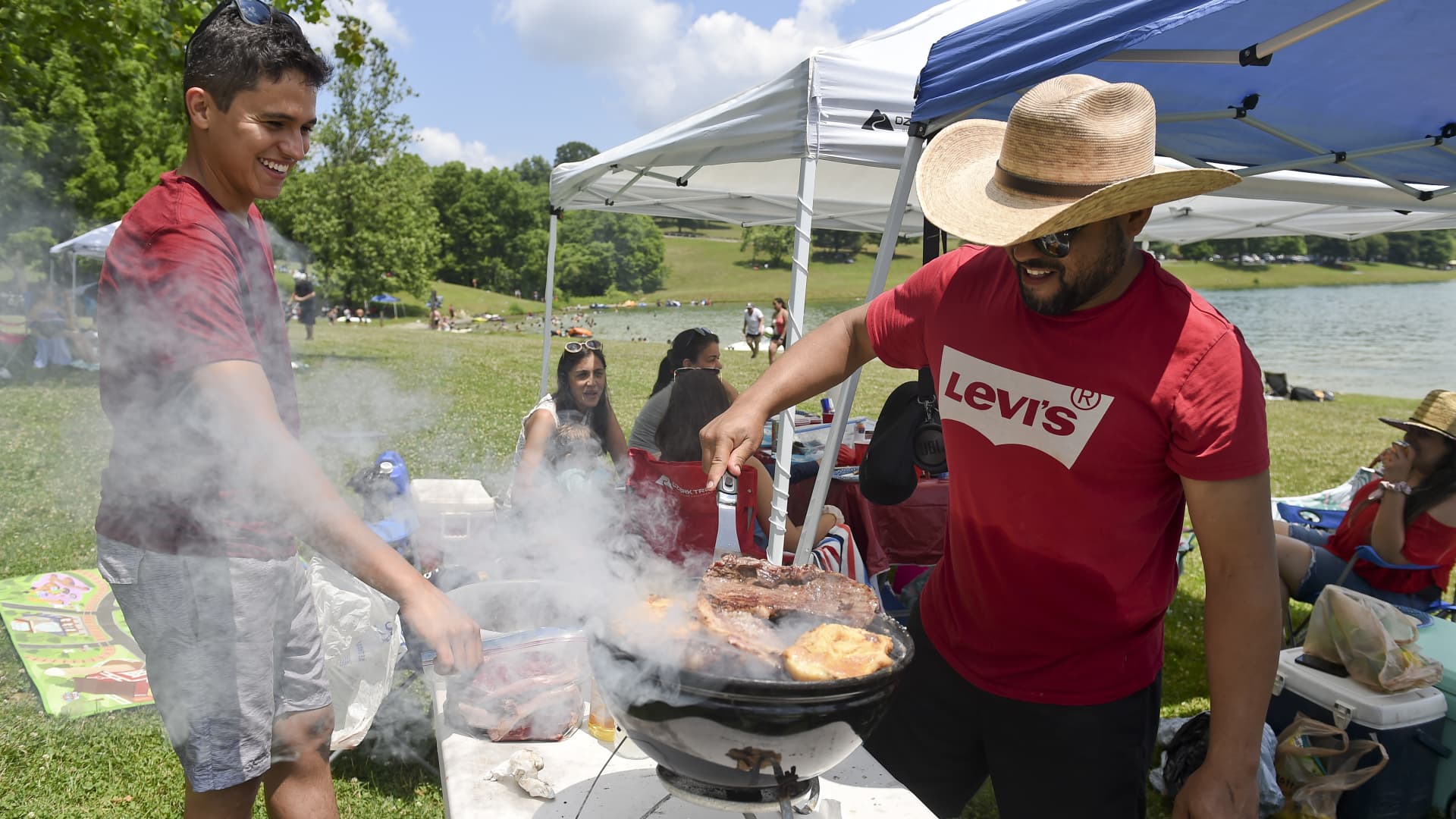
Grilling caught fire amid the pandemic as stuck-at-home consumers searched for new ways to cook meals, as well as entertain and host family and friends safely outdoors.
But while there are plenty of signs that the outdoor cooking craze is here to stay, inflation, market saturation, and supply chain challenges are threatening to lower the heat.
Since July 2020, more than 21 million grills and smokers have been purchased by U.S. consumers, according to data from NPD. The outdoor cooking industry’s revenue grew to $6.1 billion in sales in 2021, a 14% year-over-year growth.
An estimated 70% of U.S. households now own at least one grill or smoker, according to consumer research from the Hearth, Patio & Barbecue Association (HPBA), the highest the industry group has ever seen, according to its CEO and president Jack Goldman.
Nearly every type of grill has seen sales jump, from traditional charcoal and gas grills from companies like Weber and Char-Griller, to pellet grills and smokers from companies like Traeger and Masterbuilt. The embrace of outdoor cooking also further elevated products like Ooni outdoor pizza ovens and Blackstone gas griddles.
“People weren’t taking vacations, they were investing more in the home and in living outdoors, and they were sort of tired of cooking indoors,” Goldman said of the trend.
That success led to a mini-grilling IPO boom, with both Traeger and Weber going public last year. Plans for several SPAC deals were also announced, ranging from griddle maker Blackstone to barbecue and outdoor living e-commerce platform BBQGuys.
But that also led to a market saturated with new grill owners less likely to look for upgrades or replacements. Roughly 38% of all grill owners purchased a new grill in the last two years, HPBA data showed.
While the popularity of grilling continues to grow, factors such as inflation, freight, raw material cost increases and supply chain disruptions are now eating into grill sales.
Weber reported that its 2022 second-quarter sales dropped 7% year-over-year to $607 million. On a May 15 earnings call with analysts, CEO Chris Scherzinger said the industry “has seen a significant drop off in year-over-year point of sale data, with sharply reduced shopper traffic” since March.
“It’s been the puzzle for a couple of years now to figure out what 2020 and 2021 meant,” Scherzinger said on the call. “We believe that the pandemic heightened consumer engagement in the category and it established a new base of operations.”
Scherzinger added that while many people who bought grills in 2020 pushed up plans to replace an old one given the surrounding circumstances, the situation in 2022 is “more around all of the macro pressures on consumers, the inflation pressure on the prices of gas and groceries, the pressure of the volatile stock market on things like 401(k) savings or just consumer confidence more broadly.”
Traeger Pellet Grills has similarly seen sluggish sales, reporting a 5% year-over-year decline in its first quarter of 2022. Both company stocks have struggled as a result, with Traeger down more than 60% and Weber down more than 40% year-to-date, compared to a roughly 20% decline for the S&P 500.
BBQ Guys called off its $963 million SPAC in November, while the SPAC that Blackstone Products was expected to merge with has pushed back plans three times since announcing the deal in December.
But Traeger CEO Jeremy Andrus said he remains bullish, though his big question is whether Americans will continue to embrace outdoor cooking as they emerge from the pandemic.
“You look across categories and it’s very different,” he said. “You look at health and fitness, and Peloton for example – that gave rise to a category that is going to survive, but it’s also clear that when consumers had the ability to go back to a gym they did.”
The desire to cook more meals at home instead of eating out at restaurants, Andrus said, seems to be sticking. He cited research that suggested 35% of Americans said they discover a passion for cooking amid the pandemic, with 75% saying they plan to cook as much if not more at home post-pandemic.
That’s also intersecting with several other trends, Andrus said, including an increased desire to gather with friends and family and for food to be something you share, whether that means a plate of pulled pork or a photo on Instagram.”
“People love food, and now that restaurants have opened up, we expect them to go out and eat,” he said. “But we think they just love to cook at home now, too.”
